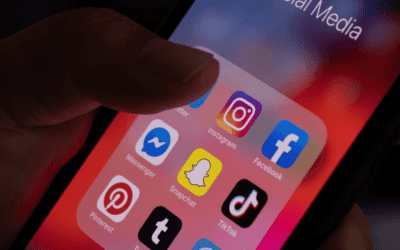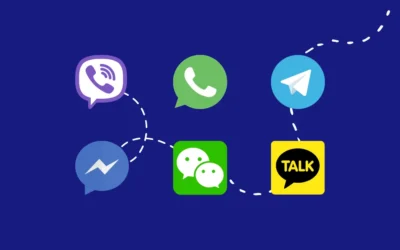•Legal Update: TikTok has filed an emergency motion for an injunction following the December 6th ruling.
•Deadline for Action: If the ban holds, ByteDance, TikTok’s parent company, must sell its U.S. operations by January 19, 2025.
•The Impact: TikTok serves 170 million users in the United States, making it a vital platform for individuals and brands to engage with audiences.
Stay informed on the evolving situation and prepare your marketing strategies to navigate the potential changes.
TikTok isn’t backing down.
On December 9, 2024, TikTok filed an emergency motion to block a law that could lead to a nationwide ban on the app by January 2025.
This latest legal move aims to keep the platform available for its 170 million U.S. users and avoid disruptions for brands and advertisers who depend on TikTok to engage with their audiences.
TikTok’s stance? The ban is both extreme and unnecessary.
The company argues it has already implemented measures to address user data protection and security concerns. Shutting down TikTok, they say, would hurt not just them but also the businesses, creators, and advertisers who rely on the app as a core part of their strategies.
The Emergency Motion for Injunction
On Monday morning, TikTok requested an emergency injunction to temporarily halt the enforcement of a U.S. law requiring ByteDance to sell its American operations or face a nationwide ban.
The injunction would delay the ban while TikTok appeals the case to the Supreme Court.
In its motion, TikTok emphasized that a ban would cause “irreparable harm” to the company and its U.S. users, many of whom depend on the platform for their businesses, entertainment, and livelihoods.
TikTok’s Fight Against Disruption
TikTok emphasized that a ban would deliver a major blow to advertisers and brands, cutting off access to an audience that has become integral to modern digital marketing strategies.
The company pushed back against the U.S. government’s national security concerns, arguing that extreme measures like a ban are unnecessary. TikTok highlighted its significant efforts to safeguard user data and ensure operational transparency.
What Sparked the Emergency Motion?
The emergency motion follows a difficult few weeks for TikTok.
On December 6, 2024, a federal appeals court upheld the Protecting Americans from Foreign Adversary Controlled Applications Act. The law requires TikTok’s parent company, ByteDance, to divest its U.S. operations by January 19, 2025—or face a nationwide ban.
The reasoning behind the law isn’t new. Lawmakers remain concerned that TikTok’s Chinese ownership could compromise national security, fearing sensitive U.S. user data could be misused.
TikTok has repeatedly denied these allegations, citing efforts like Project Texas, an initiative designed to store all U.S. user data on American soil. Despite these assurances, skepticism among lawmakers remains strong.
What makes the recent court decision pivotal is that it drastically limits TikTok’s options. By filing for an emergency injunction, TikTok hopes to delay the ban and give the Supreme Court a chance to intervene. But with the deadline looming, the stakes couldn’t be higher.
A Long-Running Battle: The TikTok Ban Timeline
The TikTok ban saga stretches back several years. In 2020, the previous presidential administration attempted to ban the platform over similar security concerns, though courts blocked those efforts.
Since then, bipartisan support for regulating TikTok has grown. In April 2024, Congress passed the Protecting Americans from Foreign Adversary Controlled Applications Act, setting a 270-day deadline for ByteDance to sell TikTok’s U.S. operations or face a ban.
While TikTok has repeatedly opposed these measures, emphasizing data protection initiatives like Project Texas, lawmakers remain unconvinced.
The federal appeals court’s recent decision has now pushed the issue to a critical turning point. If enforced, the ban would mark the most significant regulatory action ever taken against a social media platform in the U.S., impacting millions of users and reshaping the digital marketing landscape.
What a TikTok Ban Means for Advertisers
Let’s be clear: a TikTok ban would disrupt advertisers in a big way.
TikTok has revolutionized how brands connect with audiences—particularly Gen Z and Millennials—through trend-driven, short-form video content and exceptional engagement rates. Losing access to this platform would create immediate challenges, including:
•Campaign Disruption: Ongoing TikTok campaigns would be halted or scrapped altogether, leading to wasted ad spend and lost momentum.
•Rebuilding on Alternatives: Platforms like Instagram Reels and YouTube Shorts may fill the gap, but they lack TikTok’s unique culture and audience dynamics.
•Budget Adjustments: Brands will need to shift their ad budgets elsewhere, which could involve trial-and-error with unfamiliar platforms—a costly and time-consuming process.
Smaller businesses and independent creators could face the hardest hit. For many, TikTok isn’t just one tool—it’s the tool driving visibility, growth, and sales. A ban would force them to rebuild their strategies from the ground up.
What’s Next for Brands and Advertisers?
As TikTok fights its legal battle, brands and advertisers are left in a state of uncertainty.
The takeaway? Diversification is critical.
Relying too heavily on any single platform is always a risk—whether due to bans, algorithm changes, or shifting user behavior. Brands must remain flexible, ready to pivot strategies at a moment’s notice.
For now, staying informed is key. Monitor developments around TikTok’s legal appeal, and start exploring alternative platforms to mitigate potential fallout.
While TikTok’s future in the U.S. remains unclear, one thing is certain: adaptability will determine who thrives and who stumbles in this rapidly shifting digital landscape.




